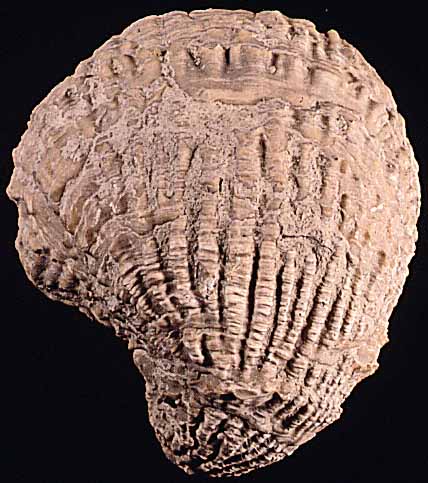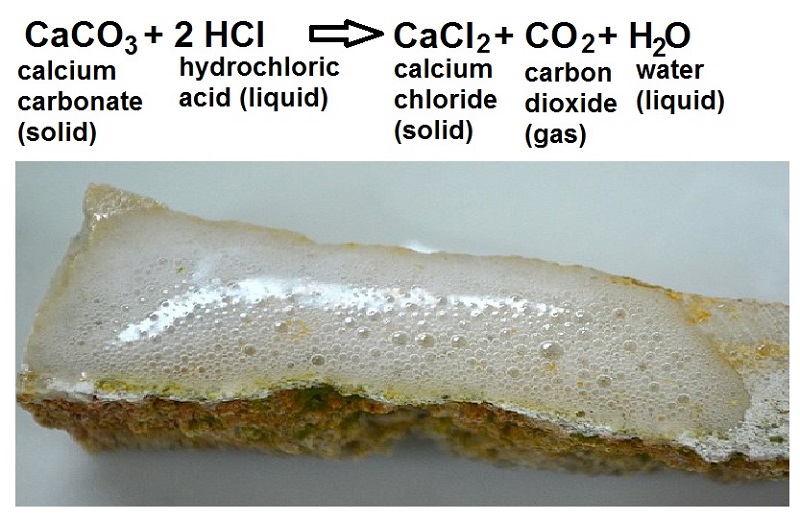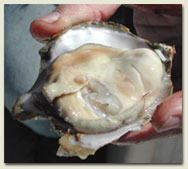B1. ORIGINAL SHELL MATERIAL
Fossilization often involves post-mortem chemical alteration of skeletal material resulting from corrosive fluids percolating through the sediments entombing the fossil remains. Sometimes this alteration is not very extensive, however, and the original shell is preserved with little modification. This is the case with this extinct Cretaceous (70 ma (mille annum, i.e. million years)) oyster Exogyra punctata from Middletown, NJ .

Calcium carbonate is a common substance found in rocks and minerals. Minerals such as calcite and aragonite (most notably as limestone, which is a type of sedimentary rock consisting mainly of calcite) will react to acid. Calcite (calcium carbonate) is the main component of pearls, corals, the shells of marine organisms, snails, and eggs. Calcium carbonate is also used medicinally as a calcium supplement or as an antacid.
When hydrochloric is applied to a material (in this case a rock or a fossil), it will react (see the equation below). The material will fizz or bubble because carbon dioxide is being produced as part of the reaction. This bubbling or effervescence indicates the presence of calcium carbonate.

B1.1 If we put a drop of hydrochloric acid on the shell of Exogyra, we will see that it fizzes.


B1.2 What do you think will happen if we test the shell of the modern edible oyster Crassostrea virginica with acid?. What do your results imply about the magnitude of evolutionary change in shell mineral composition in oysters?


©J.A. Chamberlain, Jr. - Brooklyn College - Earth and Environmental Sciences